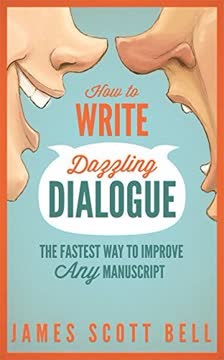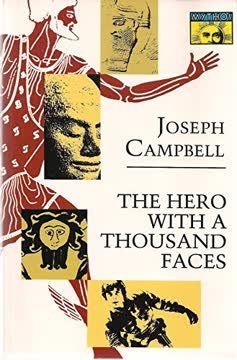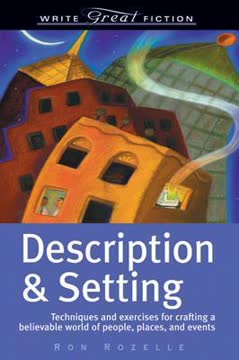Key Takeaways
1. Create a Compelling Villain to Drive Your Thriller's Plot
The villain is your best friend, because the villain creates the plot behind the plot—the plot that has to be foiled by the hero—and that, my friend, is what thriller writing is all about.
Villain profile. A compelling villain should fit a specific profile:
- Powerful and influential
- Motivated by base desires (greed, revenge, ambition)
- Often psychopathic or psychotic
- Self-centered, narcissistic, and vain
- Coldhearted, merciless, and ruthless
- Determined, cunning, and clever
- Seemingly unstoppable and relentless
To create your villain:
- Develop a detailed backstory (physiology, sociology, psychology)
- Give them a dark mission that drives the plot
- Write in their voice through journals or diaries
- Ensure they fit the villain profile while remaining unique
Remember, the villain's actions and motivations are the engine of your thriller's plot. Their dark mission creates the conflict that your hero must overcome.
2. Craft a Hero Who Embodies Courage, Cleverness, and Self-Sacrifice
Heroes are courageous. In comic thrillers sometimes they aren't, but in almost all other types of thrillers they are as courageous as a canonball.
Hero profile. A compelling thriller hero should possess:
- Courage in the face of danger
- Expertise in their profession
- A special talent or skill
- Cleverness and resourcefulness
- A wound or vulnerability
- An outlaw quality (making their own rules)
- Self-sacrificing nature for others
Developing your hero:
- Create a detailed backstory, including their wound
- Give them a special talent that sets them apart
- Ensure they're clever and resourceful in overcoming obstacles
- Make them self-sacrificing, willing to risk everything for others
- Consider giving them a flaw or vulnerability to make them relatable
Remember, your hero doesn't need to be likable or good, but they should be compelling and someone the reader can root for as they face seemingly impossible odds.
3. Build Your Thriller on Seven Essential Pillars
To create a damn good thriller, construct it on the following seven pillars. Leave any one out and you may fail.
The seven pillars of a damn good thriller:
- High stakes: Lives, sanity, or the fate of humanity should be at risk
- Unity of opposites: The hero can't escape the challenge
- Seemingly impossible odds: It should appear the hero can't possibly win
- Moral struggle: Clear right and wrong, with the hero on the side of right
- Ticking clock: A deadline creates urgency and keeps readers engaged
- Menace: Constant danger for the hero and other characters
- Thriller-type characters: Clever and resourceful heroes and villains
When plotting your thriller, continually check that you're incorporating these elements. They create the tension, excitement, and moral weight that readers expect from the genre.
4. Hook Readers with a Gripping Opening and Maintain Suspense
You may think that I'm focusing a lot of attention on the opening of the story. The reason is that it is the most important part. If you do not have a gripping opening to your thriller, it is unlikely that you will dazzle an agent and woo an editor.
Opening strategies:
- Start with the villain's dark mission
- Show a minor character in terrible trouble
- Put the hero in immediate peril
- Begin with the hero already on their mission
Key elements for a gripping opening:
- Raise strong story questions
- Create immediate conflict or danger
- Introduce a situation of injustice
- Use vivid, sensory details to draw readers in
- Avoid dream sequences or extensive backstory
To maintain suspense throughout:
- Keep raising new story questions
- Introduce unexpected complications
- Use cliffhangers at chapter ends
- Gradually reveal information about characters and plot
- Maintain a sense of constant menace or danger
Remember, your goal is to make the reader desperate to know what happens next, compelling them to keep turning pages.
5. Develop a Step-by-Step Plot Structure for Your Thriller
To simplify things, I'll break up my step sheet for Peace Day into the five movements we already discussed so that it will be easier to follow.
Five-movement thriller structure:
- The gripping opening: Introduce characters, raise story questions
- The evil plot unfolds: Hero fights defensively, gathering information
- The turning point: Hero goes on the offensive
- Confrontation and climax: Hero faces villain in final showdown
- Resolution: Wrap up loose ends, show impact on characters
Creating a step sheet:
- Break your story into these five movements
- Under each movement, list key plot points and scenes
- For each step, include:
- Character motivations and conflicts
- Important story questions raised or answered
- Key information revealed
- Emotional impact on characters and readers
Benefits of using a step sheet:
- Helps you visualize the entire story arc
- Makes it easier to identify and fix plot holes
- Allows for quick revisions and restructuring
- Ensures you're maintaining suspense and conflict throughout
Remember to keep your step sheet flexible, allowing for changes as you discover new ideas during the writing process.
6. Master the Art of Conflict-Driven Dialogue and Scene Writing
To write dramatic conflict dialogue and have information conveyed in it is not all that difficult. You just need to give characters an agenda.
Keys to compelling dialogue:
- Give every character an agenda or goal in the scene
- Ensure characters' goals conflict with each other
- Avoid "on-the-nose" dialogue where characters say exactly what they mean
- Use subtext to convey deeper meanings and emotions
- Break up dialogue with action and internal thoughts
Techniques for conflict-driven scenes:
- Start with a clear understanding of each character's motivation
- Introduce obstacles that prevent characters from achieving their goals
- Use "Show, don't tell" to convey emotions and reactions
- Incorporate sensory details to bring the scene to life
- End scenes with new complications or revelations
Avoid common pitfalls:
- Back-and-forth dialogue with no conflict
- Informational dialogue that serves only to convey facts
- Scenes without clear character motivations or goals
Remember, every scene should move the story forward and reveal something new about the characters or plot. If a scene doesn't serve this purpose, consider cutting or revising it.
7. Craft a Thrilling Climax That Satisfies and Surprises Readers
The opening of the story is the most important part, but the climax is the most exciting. A great climax (and the resolution that follows it) will leave the audience feeling satisfied.
Elements of a damn good thriller climax:
- Hero nearly dies but ultimately prevails
- Good triumphs over evil (except in some literary thrillers)
- Incorporate surprising twists or revelations
- Use fresh, innovative confrontation methods
- Reveal character growth or insights
- Consider including a significant loss for the hero
- In rare cases, the hero may die (but usually after achieving their goal)
Steps to craft your climax:
- Build tension throughout the climactic sequence
- Raise the stakes to their highest point
- Create a moment where all seems lost for the hero
- Reveal the hero's clever plan or final burst of courage
- Resolve the central conflict decisively
- Provide an emotional payoff for the reader
Tips for a memorable climax:
- Tie up major plot threads, but leave some mystery for the resolution
- Ensure the hero's actions are consistent with their character arc
- Use vivid, sensory details to make the scene come alive
- Pace the action carefully, alternating between intense moments and brief pauses
- Consider a dual climax structure for added excitement
Remember, your climax should be the most thrilling and emotionally satisfying part of your story, leaving readers breathless and eager to see how everything wraps up in the resolution.
Last updated:
FAQ
What's How to Write a Damn Good Thriller about?
- Comprehensive Guide: The book is a detailed guide for aspiring novelists and screenwriters on crafting compelling thrillers.
- Structured Approach: It offers a step-by-step method to develop ideas, characters, and plots that captivate readers.
- Focus on Key Elements: Emphasizes essential thriller elements like high stakes, clever villains, and flawed heroes.
Why should I read How to Write a Damn Good Thriller?
- Expert Insights: Written by James N. Frey, it draws on his extensive experience in writing and teaching thrillers.
- Practical Techniques: Provides practical techniques and examples from successful thrillers to apply to your own work.
- Engaging Style: Frey's humorous and engaging writing style makes it enjoyable, even for non-writers.
What are the key takeaways of How to Write a Damn Good Thriller?
- Seven Pillars: The book outlines seven essential pillars for a good thriller, including high stakes and clever characters.
- Character Development: Stresses the importance of well-rounded characters, especially the hero and villain.
- Plot Structure: Discusses thriller structure, breaking it into movements to maintain tension and engagement.
What is a "germinal idea" in How to Write a Damn Good Thriller?
- Foundation of Story: A germinal idea is the initial concept that sparks the creative process for a thriller.
- High vs. Low Concept: Frey distinguishes between high concepts, which are fresh and exciting, and low concepts, which lack originality.
- Examples Provided: Offers examples of successful germinal ideas to illustrate their transformation into compelling thrillers.
How does Frey define a "thriller" in How to Write a Damn Good Thriller?
- Fast-Paced Narrative: Characterized by a fast-paced narrative that keeps readers engaged.
- High Stakes and Suspense: Involves characters facing high stakes and intense suspense, often with life-or-death situations.
- Clever Heroes and Villains: Features clever heroes on impossible missions to foil equally clever villains.
What are the "Seven Pillars of a Damn Good Thriller"?
- High Stakes: The story should involve significant risks, often with lives on the line.
- Unity of Opposites: The hero must confront the villain, creating a strong narrative drive.
- Seemingly Impossible Odds: The hero should face challenges that seem insurmountable.
- Moral Struggle: The conflict should embody clear moral distinctions between good and evil.
- Ticking Clock: A sense of urgency should be present, often through a deadline the hero must meet.
What specific methods does Frey recommend for plotting a thriller?
- Step Sheet Technique: Advocates creating a step sheet to outline the plot and visualize the story's structure.
- Five Movements Structure: Suggests dividing the story into five movements, including a gripping opening and a thrilling climax.
- Rising Conflict: Each movement should build on the previous one, ensuring escalating conflict.
How does Frey define a "gripping opening" in a thriller?
- Immediate Engagement: Should hook the reader right away, introducing conflict or a compelling story question.
- Character in Trouble: Often features a character in a precarious situation, setting the stage for future challenges.
- Foreshadowing: Hints at larger themes and conflicts, creating anticipation for the reader.
What are the common pitfalls in thriller writing that Frey warns against?
- Muddle in the Middle: Warns against sagging plots in the middle, which can lead to reader disengagement.
- Informational Dialogue: Advises against using dialogue solely for exposition, as it can feel forced.
- Bland Characters: Stresses the importance of dynamic, three-dimensional characters to maintain emotional investment.
How does Frey suggest creating a villain in How to Write a Damn Good Thriller?
- Villain Profile: Outlines traits like being powerful, ruthless, and driven by base motives.
- Dark Mission: The villain should have a clear dark mission that drives the plot.
- Character Depth: Understanding their motivations is crucial for believability, even without a full backstory.
What is the importance of the hero in How to Write a Damn Good Thriller?
- Central Character: The hero is often the most important character, as the audience typically identifies with them.
- Hero Profile: Describes the hero as courageous, clever, and resourceful, often with a special talent.
- Wounded and Flawed: The hero should have a wound or flaw that adds depth and makes their journey compelling.
What are the best quotes from How to Write a Damn Good Thriller and what do they mean?
- "A thriller is a story of a hero who has a mission to foil evil.": Highlights the central conflict between good and evil.
- "The villain is your best friend.": Emphasizes the villain's importance in driving the plot and creating tension.
- "All damn good thrillers are built on seven pillars.": Reminds writers of the foundational elements for an engaging thriller.
Review Summary
Reviews for How to Write a Damn Good Thriller are mixed. Some readers found it helpful, praising its practical advice and insights into the thriller genre. Others criticized it for being outdated, lacking depth, and containing too many examples of the author's own writing. Common complaints include the book's focus on formulaic writing, head-hopping, and the author's perceived arrogance. Several reviewers noted that while some tips were useful, the book's overall approach felt dated and not aligned with modern thriller writing techniques.
Similar Books








Download PDF
Download EPUB
.epub digital book format is ideal for reading ebooks on phones, tablets, and e-readers.






